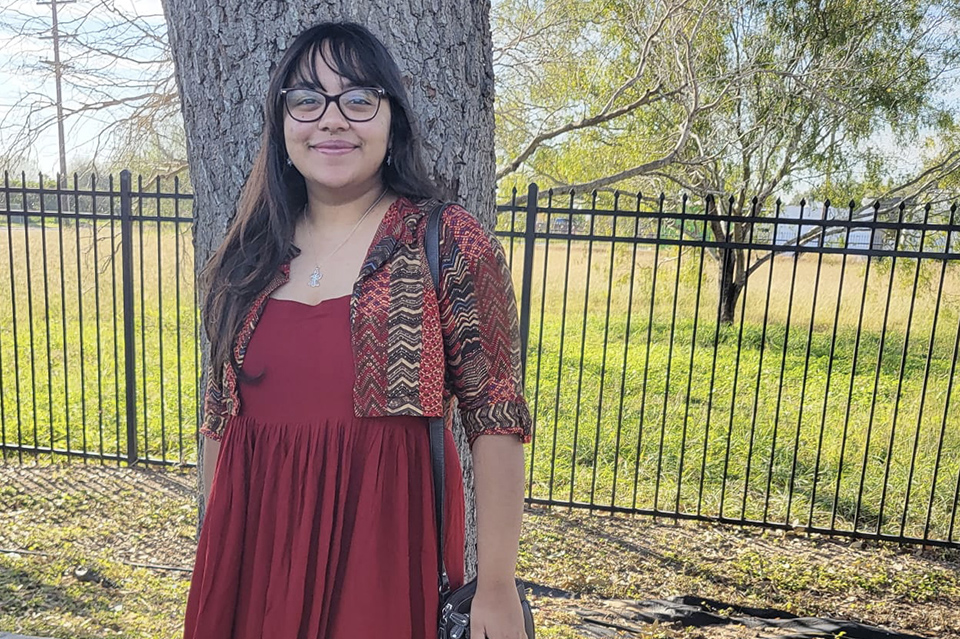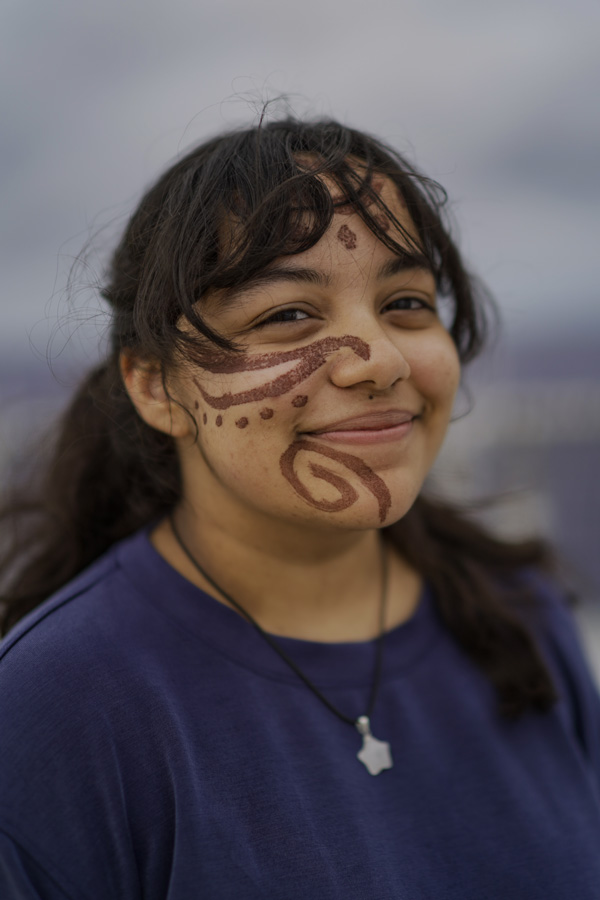By Amanda A. Taylor-Uchoa
RIO GRANDE VALLEY, TEXAS – APRIL 25, 2024 – Not many people can say they helped discover more than 200 never-before-observed marine species and a potential 50 species completely new to science.
But UTRGV sophomore Megan Francis can.
Francis, who is pursuing a Bachelor of Science in Marine Biology, was one of two students who participated in the recent Schmidt Ocean Institute expeditions off the coast of Chile that made the discoveries now gaining international attention.
Francis and another UTRGV student, Elyssia Gonzalez, a grad student pursuing a master’s degree in Ocean, Coast and Earth Sciences, were both aboard the Falkor (too), but on separate expeditions under the leadership of Dr. Erin Easton, assistant professor in the UTRGV School of Earth, Environmental, and Marine Sciences.
The three were part of the Schmidt research journeys, a unique research opportunity facilitated for UTRGV students by SEEMS. Francis said the seagoing sojourn provided immeasurable research opportunities to delve into the world of science, specifically marine biology.
Francis is pursuing a career in science and plans to become a physician. Specifically, she is interested in the cross-sections between marine biology and medicine, showing significant interest in the parallels between how various organisms adapt to ever-changing environments and how these studies can affect human health.
“I’m fascinated by comparative evolution and understanding it,” she said. “Seeing rudimentary body systems in marine organisms and understanding how they've grown accustomed and are more robust to changes in environment because a lot of the health problems that we have is our bodies trying to become more accustomed to drastic changes in climate and environment.”
DIVING INTO RESEARCH
The expedition in which Francis participated ran for 40 days from Feb. 24 to April 4, and explored the Salas y Gomez Ridge to Rapa Nui (Easter Island) under the direction of lead scientist Dr. Javier Sellanes of the Universidad Católica del Norte in Chile.
Easton was lead scientist on the second expedition, from Feb. 24 to April 4, with Francis aboard.
Francis, aboard the Falkor (too), was able to collaborate with fellow researchers from all walks of life, and she was especially excited to share a common interest in the intersection of medicine and marine biology with Sellanes, whose research focuses on toxins in mollusks and how they are used for pharmaceutical purposes.
Francis said being able to collaborate with like-minded researchers opened her eyes to the world of science.
“On a personal level, this whole experience allowed me to raise my sense of self-efficacy as a future scientist,” Francis said. “The closeness of the researchers and scientists, and the support they offered, really helped me realize this is something I’m capable of doing. It is such a meaningful stage in my education.”
Originally from Sharon, Massachusetts, Francis is able to take the research methods she learned on the expedition and apply it to her future point of interest – sea grasses and soft-bodied corals.
“I’m really interested in the sea grasses within our South Texas region, and I think one of the most interesting comparisons between exploring the Salas y Gomez Ridge and studying the Lower Laguna Madre is that there are miotic factors very specific to each respective region,” she said.
For example, the salinity within the Lower Laguna Madre is considered a hyper salinity region – an environment ideal for highly endemic species to form and thrive.
“I think being able to understand how all of these factors come together in different regions of the world is really wonderful to bring back to the Valley, because it helps me reflect on how special our region is.”
SEEKING OPPORTUNITIES
Participating in a research expedition like this one was “life-changing,” Francis said, and while it was a once-in-a-lifetime experience, there are many other research opportunities available to UTRGV students. They just have to seek them out.
“I found out about this opportunity simply because I was taking a course with Dr. Easton,” she said. “Once she detailed the information to everyone, I sent in my materials right away and expressed great interest for the voyage. After an interview, I was accepted and was able to take part in this.
She advises students to be proactive in their search for as many research opportunities as possible, because all types of research opportunities can lead to more goals for one’s area of study and future career.
“Our professors really want to help us out,” Francis said. "They are wonderful mentors, and they are keen on giving students diverse opportunities. “Reach out and talk to them. This experience has allowed me to refine so much of what I want to do and pursue.”
ABOUT UTRGV
The University of Texas Rio Grande Valley (UTRGV) was created by the Texas Legislature in 2013 as the first major public university of the 21st century in Texas. This transformative initiative provided the opportunity to expand educational opportunities in the Rio Grande Valley, including a new School of Medicine, and made it possible for residents of the region to benefit from the Permanent University Fund – a public endowment contributing support to the University of Texas System and other institutions.
UTRGV has campuses and off-campus research and teaching sites throughout the Rio Grande Valley including in Boca Chica Beach, Brownsville (formerly The University of Texas at Brownsville campus), Edinburg (formerly The University of Texas-Pan American campus), Harlingen, McAllen, Port Isabel, Rio Grande City, and South Padre Island. UTRGV, a comprehensive academic institution, enrolled its first class in the fall of 2015, and the School of Medicine welcomed its first class in the summer of 2016.


